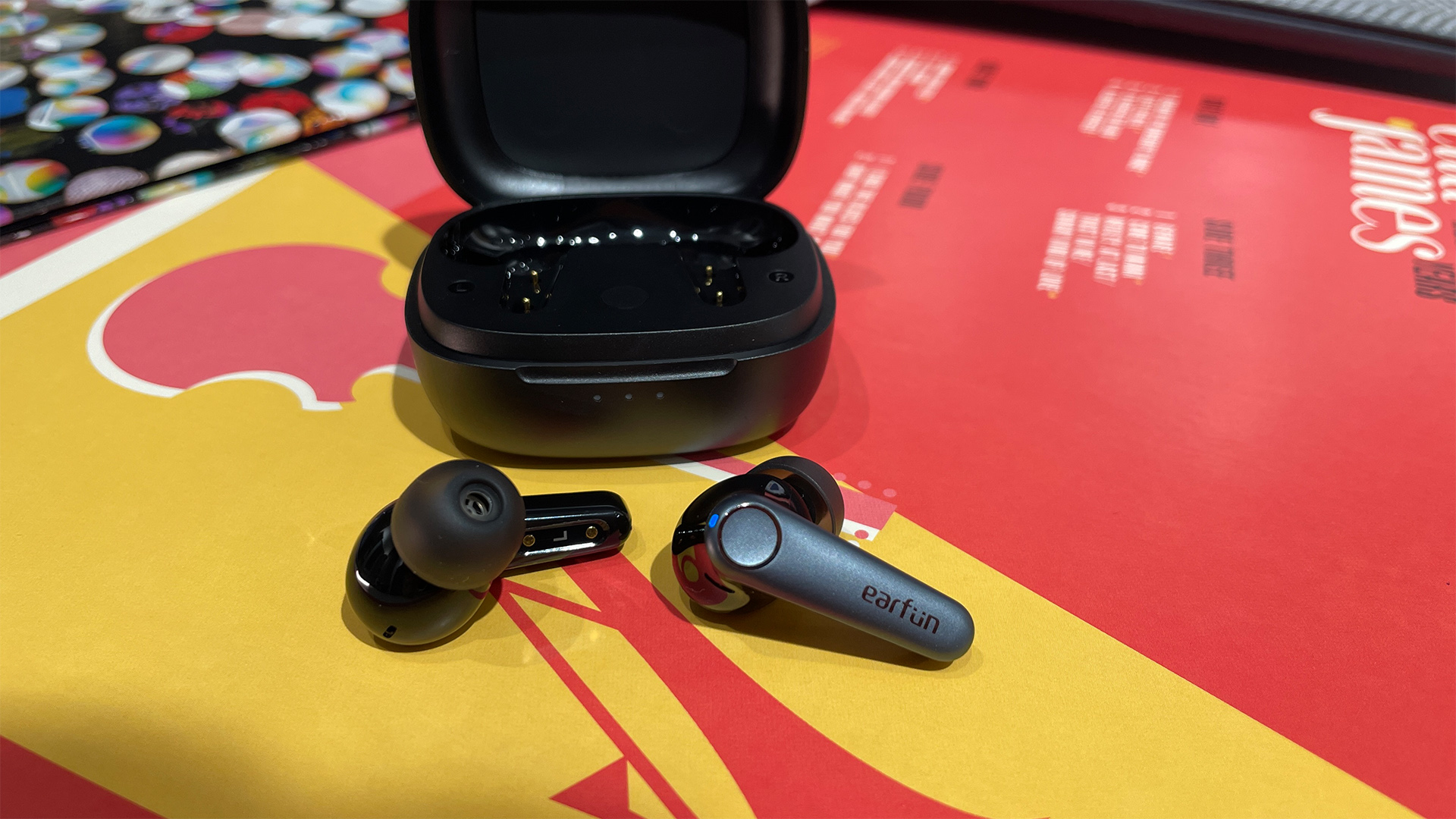
Earfun hit upon a very effective formula a few years ago now, and it’s not about to change its tactics for the Air Pro 3 true wireless earbuds. At its most fundamental level, the Earfun strategy is to load its earbuds with an eye-catching number of features and extended functionality, and then price them way below what a) you might reasonably expect, and b) your more high-profile and credible rivals can manage. It’s hardly rocket-science, but then again it’s worked a treat until now – just look at the 2020 Award-winning Earfun Air. Can lightning strike a third time?
Price
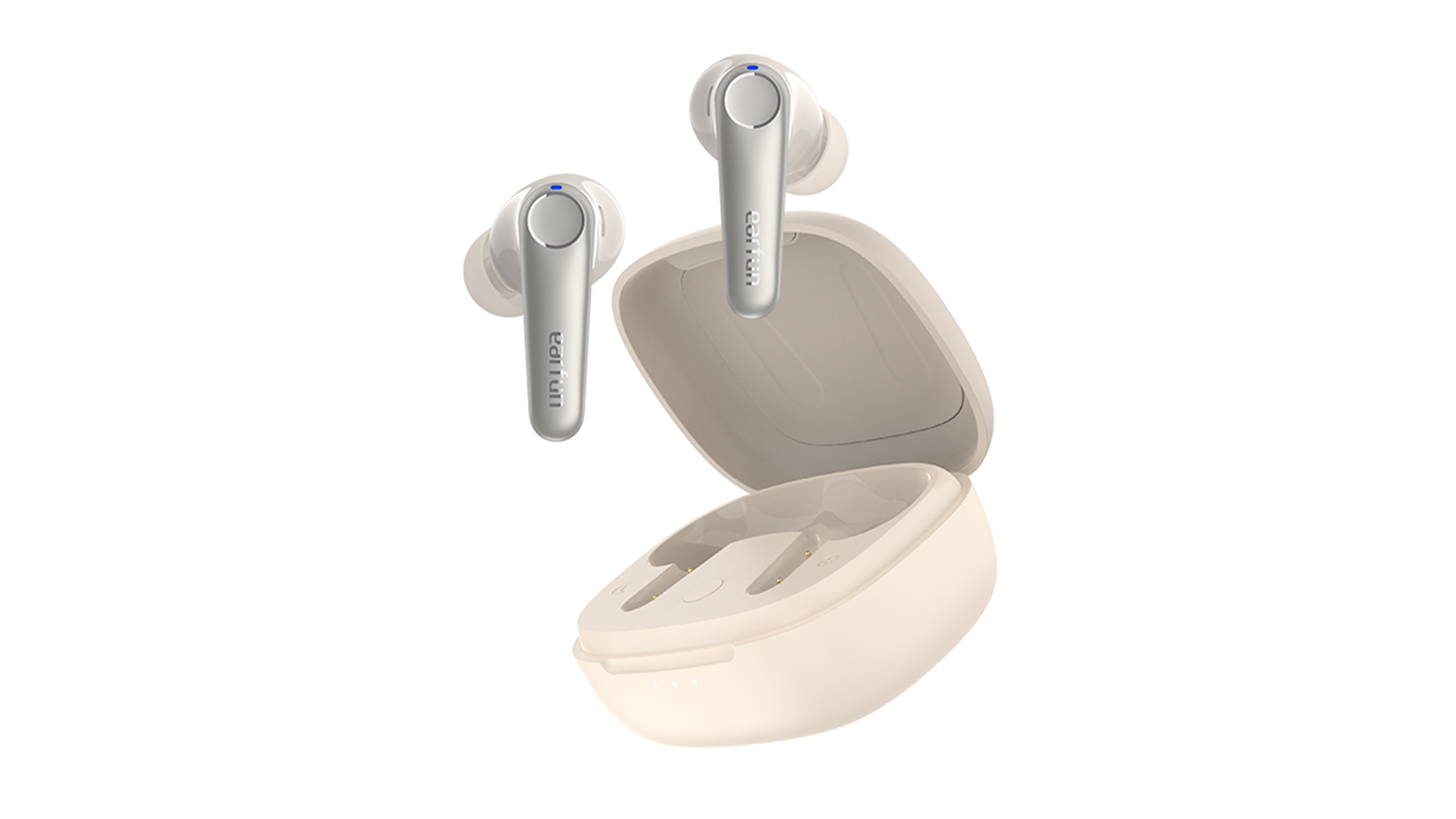
The Earfun Air Pro 3 are priced on the budget side: in the United Kingdom they’re yours for no more than £79. In America they’re even more affordable $79, while in Australia they sell for AU$99, tops. As far as affordability goes, then, we’re going to go with the description ‘striking’. We’re already seeing these buds on regular discounts too (under £50), so keep your eyes peeled if you want a true bargain.
At around this end of the price spectrum you have stiff competition from five-star rivals Panasonic RZ-S500W (£100 / $150 / AU$219) and Sony WF-C700N (£100 / $120 / AU$200) – both of which can be found at much lower discounted prices these days, too.
Design & comfort

There’s not too much to take issue with where the design of the Air Pro 3 is concerned – after all, there are limits to what you can do with the design of a true wireless earbud even if you’re creating an expensive version. So Earfun has continued with the ‘dangly stem’ design it debuted on the original Air Pro a few years ago.
The earbuds are made of glossy-looking but unremarkable-feeling plastic grey for the stem, black for the body and driver-housing (they also come in white and blue variants). The charging case, too, is plastic and doesn’t feel anything special – but like the earbuds that travel inside it, it’s usefully light and shaped to be easily portable. Build quality and the standard of finish is perfectly acceptable in the context of the asking price.
Earfun provides four different sizes of eartip in the packaging, so there should be a size there to suit all but the most remarkable ears. Once you’ve sized yourself up, the Air Pro 3 fit snugly, but are not obtrusive – and while they’re not sports-buds, they’ll happily stay in position if you have to break into a run to catch that train or something. And thanks to the shape, the fit and the light weight, they stay reasonably comfortable even through long listens. And thanks to an IPX5 rating, those ‘long listens’ can safely take place just about anywhere.
Features
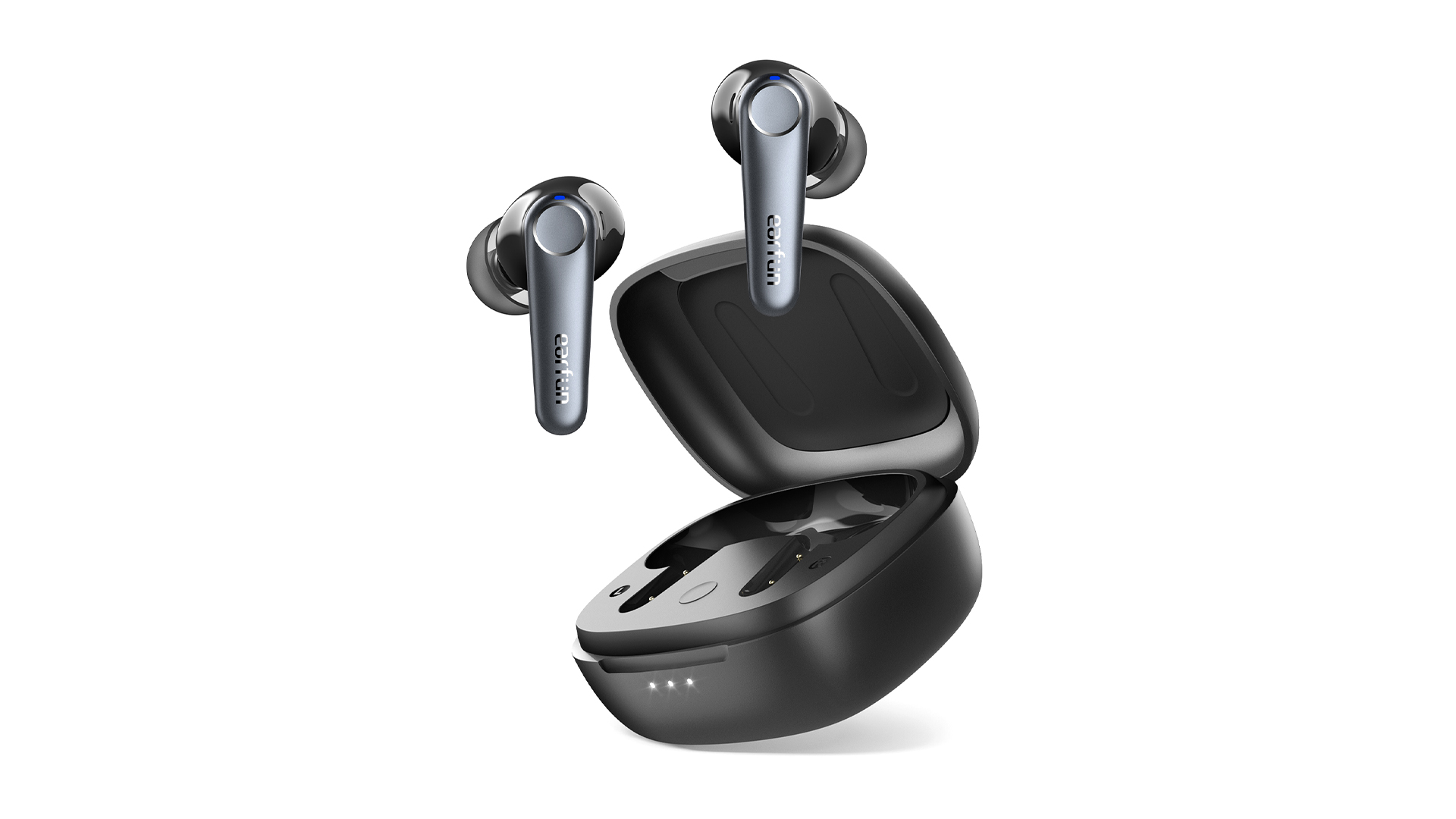
The Earfun Air Pro 3 use Bluetooth 5.3 for wireless connectivity and have multipoint capability, and they are compatible with SBC, AAC and Qualcomm’s aptX Adaptive codecs. The company has tapped up Qualcomm for its QuietSmart 2.0 hybrid active noise-cancellation, too – the Air Pro 3 should adapt to your environment in real time and give you the best noise-cancelling experience possible. That’s the theory, anyway.
Once your digital audio information is safely on board, it’s delivered to your ears by a couple of oversized (11mm) wool-composite full-range dynamic drivers. Earfun isn’t quoting a frequency response, but it is prepared to say these drivers offer ‘extended’ high-frequency response.
There are three mics fitted to each earbud: feed back, feed forward and voice pick-up. This array features cVc 8.0 technology, and takes care of active noise-cancellation, telephony and voice- assistant interaction. Always assuming your source player has a native voice-assistant, that is…
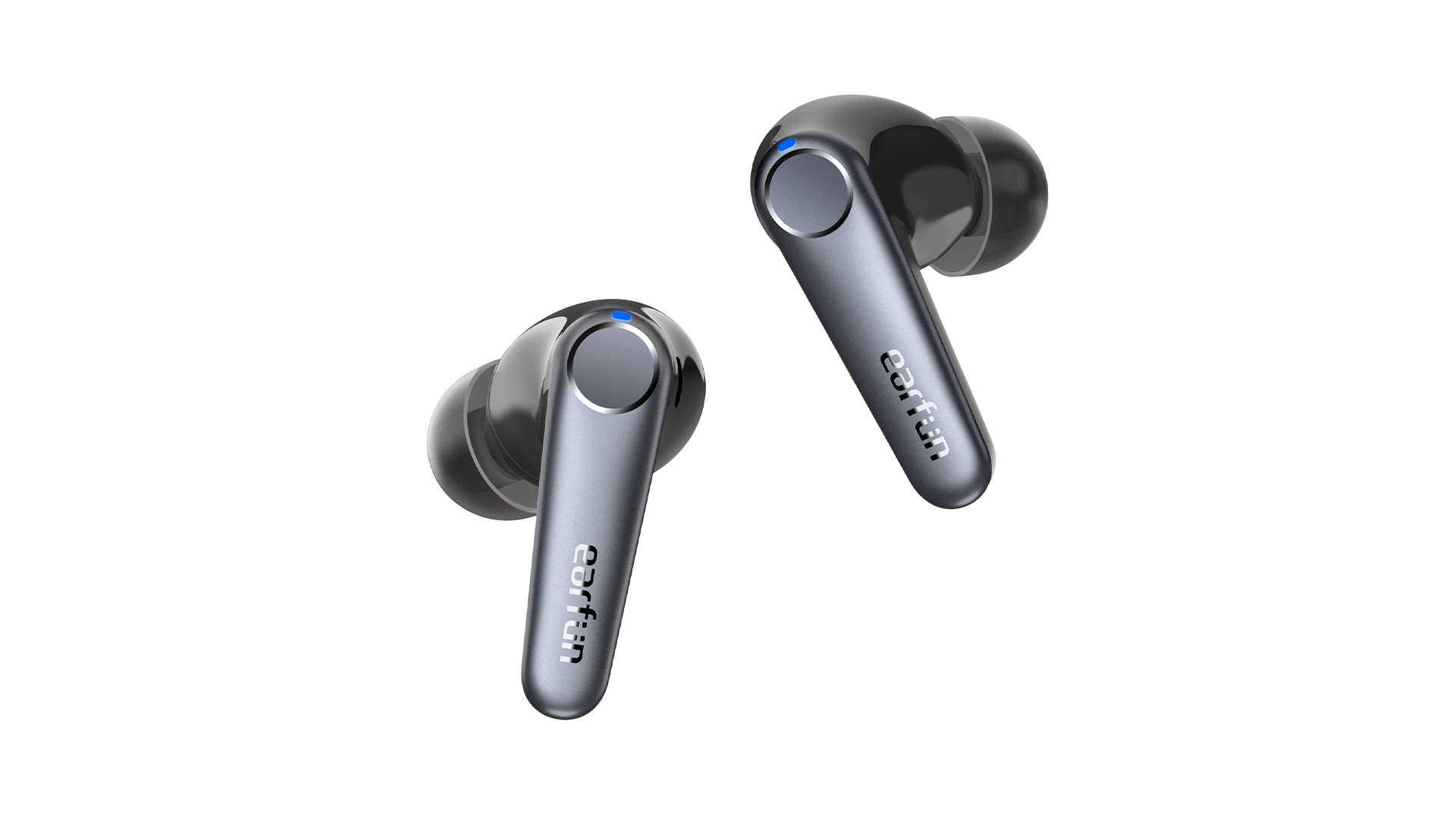
Bluetooth 5.3
Codec support SBC, AAC, aptX Adaptive
Battery life 45h (claimed)
Charging USB-C, Qi
ANC? Yes, hybrid
Built-in mic and controls? Yes
Weight 52g (charging case)
Finishes x3 (black, white, blue)
You may prefer to use the capacitive touch-controls integrated into each earbud, of course. They’re reasonably responsive and reliable, and can put you in control of ‘volume up/down’, ‘play/pause’, ‘skip forwards/backwards’, ‘answer/end/reject call’ and ‘summon voice assistant’. In addition, you can cycle through your active noise-cancellation options (‘on’, ‘off’ and ‘ambient sound’).
The touch-controls can be rearranged in the Earfun Audio app that’s free for iOS and Android. As well as dictating how many taps on the earbuds do what, here’s where you can check for updates, fiddle with EQ settings, examine remaining battery life and all the other usual stuff. It’s a useful and gratifyingly stable example of the type.
Battery life
Earfun is claiming nine hours of power in the earbuds themselves, with a further four full charges in the case giving a total of 45 hours – that’s with active noise-cancellation (ANC) switched off. Turn it on and the numbers drop to seven hours from the buds for a total of 35 hours. Which wouldn’t be bad at all if it was entirely accurate.
To be fair, Earfun isn’t as optimistic as some rival brands when it comes to quoting battery life. But nevertheless, you should probably budget for 7+28=35 with ANC off and 6+24=30 when it’s switched on – this way, you won’t be disappointed.
No matter how long it’s taken to exhaust the battery, though, you can recharge your Air Pro 3 from ‘flat’ to ‘full’ in around two hours using the case’s USB-C socket. The Earfun are Qi-compatible, but wireless charging of course takes longer.
Sound

You’re able to interfere with the sound of the Air Pro 3 using the EQ settings in the app, of course. Less welcome, but no less significant, is the difference in overall sound the Earfun deliver depending on whether or not you’ve switched active noise-cancellation on. No matter how you seek to stick your oar into the audio performance, though, there are fundamental characteristics to the sound these earbuds make – for better and for worse.
A 16bit/44.1kHz file of Wish You Were Gay by Billie Eilish explains quite a bit about the way the Air Pro 3 go about things. With EQ settings left well alone and ANC switched off, the Earfun a quite a bass-happy listen – the low frequencies they create are quite well-controlled and enjoy reasonably straight edges at the attack of bass sounds, but they’re overconfident without doubt. Even though rhythmic expression is decent, the forward nature of the bottom end can drag at tempos and make the momentum of recordings suffer as a result. The low end is quite short of light and shade, too, with less tonal variation than is ideal – so bass rather mindlessly thumps along.
At the opposite end, meanwhile, treble sounds are all leading edge and very little substance. The lack of top-end body makes for hard and splashy high-frequency reproduction, which the more impressive detail levels do very little to mitigate. It almost goes without saying that the more volume you dial in, the harder and less yielding the high end becomes.

The midrange, then, is fighting a bit of a losing battle – which is a pity, because unlike the rest of the frequency information it is quite balanced, quite poised and actually quite articulate. A recording like this one, which doesn’t have a whole lot of low-frequency activity going on, enjoys eloquent vocal reproduction, an area of calm in the middle of the disorder.
Switch to a more involved recording like Sprinter by Torres and the Earfun’s soundstage is revealed to be rather confined – so each element finds itself scrapping for space in which to express itself. A shortage of dynamic headroom means there’s little variation in the level of intensity, and the overall sound is ultimately rather unsophisticated – and the initial impression of excitement and energy doesn’t really make up for it.
Switch active noise-cancelling on and while external distractions are reduced quite significantly, there’s a shift in the sonic performance. The system doesn’t leave much trace of itself where counter-signal is concerned, except when it’s trying to be clever and modify its response to its environment – but the sound becomes a little hazier and slightly less well-defined.
Verdict
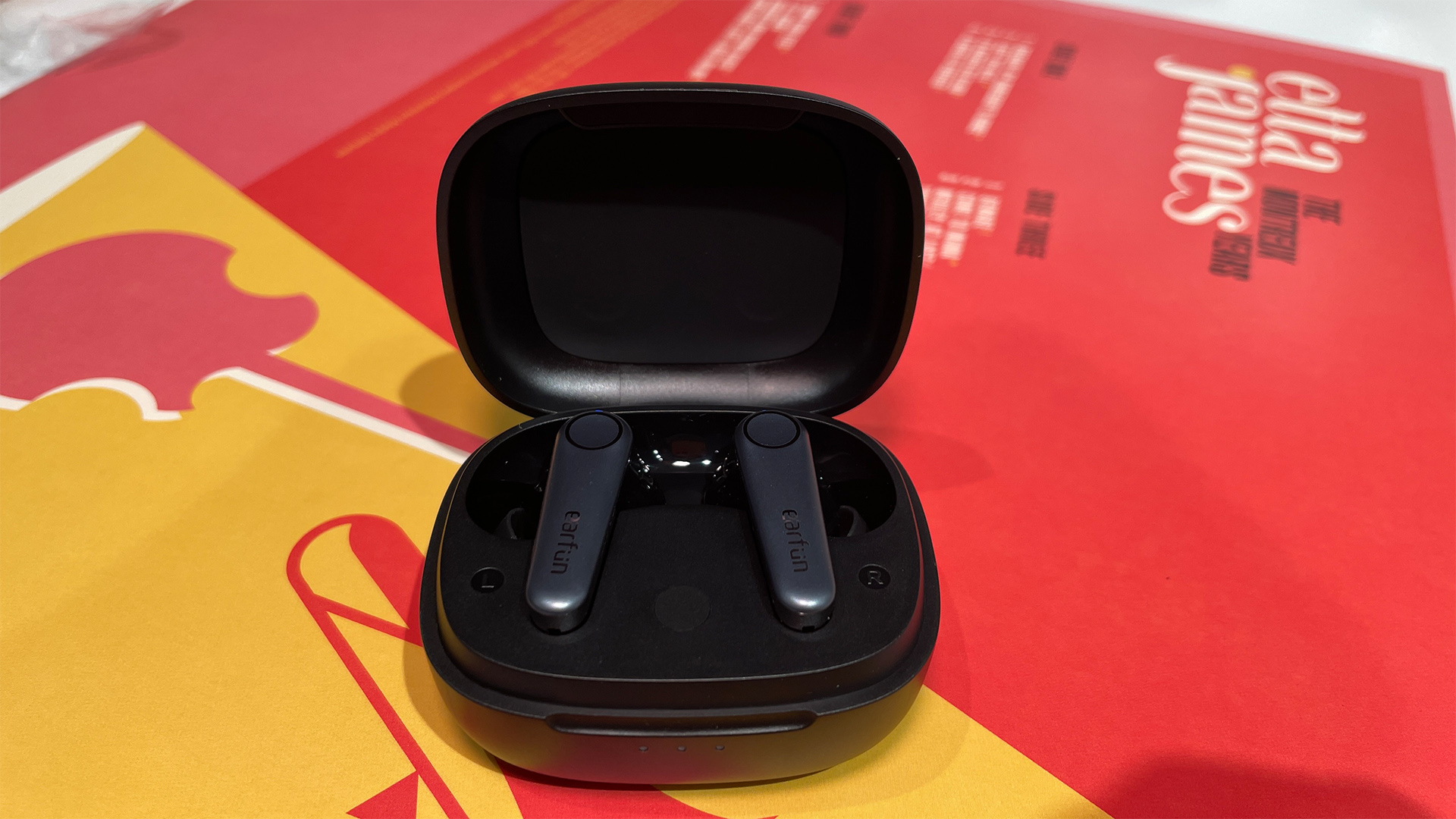
Compared with truly excellent rivals like the Sony C700N and Panasonic RZ-S500W, which offer a more convincing blend of talents and are far more capable sonically for the money, the Earfun Air Pro 3 fall behind.
They’re by no means a poor pair of true wireless earbuds, but we’ve reached a point where ‘not poor’ is nothing like good enough for a product to properly compete. Even one as affordable and well-specified as this one.
SCORES
- Sound 3
- Features 5
- Comfort 4
MORE:
Read our review of the Sony WF-C700N
Also consider the JBL Live Pro 2 TWS
Read our Panasonic RZ-S500W review
These are the best cheap wireless earbuds you can buy







